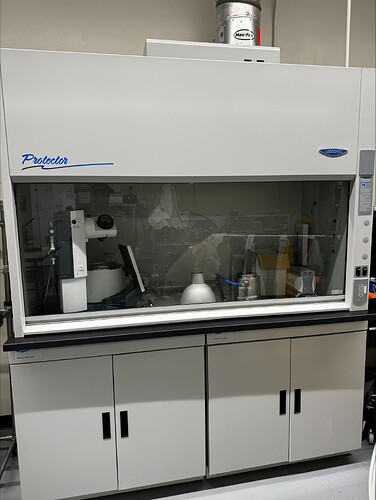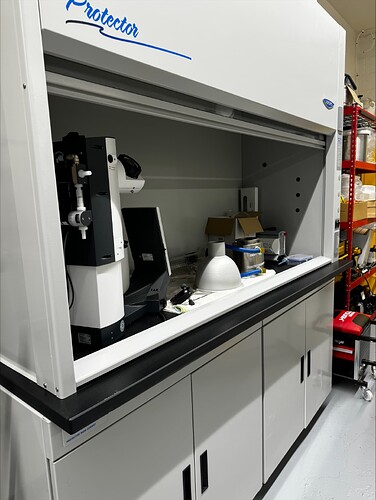Item Model/Manufacturer: Labconco
Description: Series 70 Fume Hood, this hood is new and has never been used. It does come complete with the fan and the cabinet underneath.
Price/MSRP: $5000
Current location of item: Denver
Estimated lead time: Available now
Fulfillment: Pick up in Denver or make shipping arrangements from Denver
User support / Warranty: The unit is brand new and unused, however, we can not supply warranties on the equipment.
Does the equipment inside the hood have to be intrinsically rated for hazardous environment?
Is it essentially a baby tabletop c1d1
the inside of a hood might have (but doesnt necessarily need) XP rated lighting…but for the most part, no. The WHOLE point of a chemical fume hood is to not be subject to C1D1 requirements by virtue of not allowing an environment to exist within the hood where flammable vapors can accumulate. In other words, because of the extreme ventilation in that limited amount of space you don’t need C1D1 (by code, at least).
Does the code have a maximum space where ventilation alone is allowed?
Lowering the price to $5000
No, the code required to operate certain items is based off solvent occupancy.
Your AHJ will have their own method, but theyre all based upon NFPA/Fire Codes, but many use a HMIS (Hazardous Materials Inventory Statement) during your plan check process to determine if you will need a c1d1/2 zone for your processes.
Labs that use less than the AHJ’s documented solvent occupancy limitations, are not typically subject to the C1D1/D2/EX-rated requirement.
Eg, you can use up to 5 gallons of Alcohols, in a semi-closed loop system, and certain AHJ’s allow that if you have enough HVAC alone.
A fume hood would allow you to use small quantities, under the stated occupancy limitations, in the ventilated area, for small scale use.
You could, as Ive seen many labs do, use labconco hoods, walk in and desktop/tabletop, as a rated C1D1/2 enclosure.
What is required is a 3rd party state licensed professional engineer to review your enclosure and your intended equipment for use in the enclosure, and to field inspect and also certify the custom enclosure.
Only then, would you need to ensure all lights, fans, switches, outlets, pumps, rotovaps, etc are all C1d1 or c1d2 rated respectively.
To further complicate things, a 3rd party PE can also write a conformance/operational parameter document for a non-c1d1/2 rated piece of equipment, stating it is safe to operate in a certified c1d1/2 environmental capacity.
Certain hoods are sold rated to c1d1/2 ratings, and have confirmance documentation provided (either in the form of a 3rd party peer review, UL Listing for model type, or ETL listing for model type/shop drawing)
Back to the top

